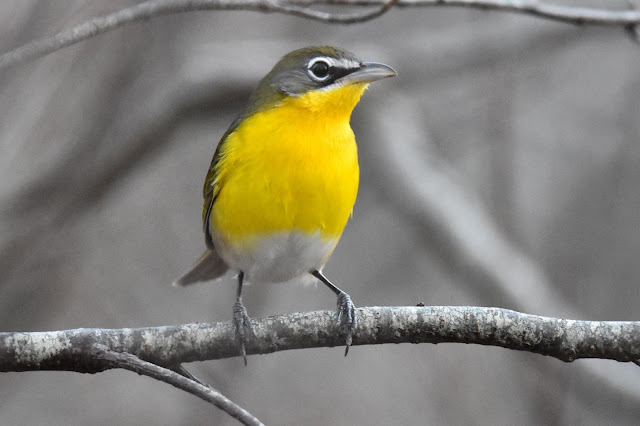Western Tanager Female [Mitch Doucet Photo]
About the middle of December a Western Tanager (Piranga ludoviciana) arrived at a feeder in Moncton. It is still coming regularly a week later. The bird is a female and has provided birders with good views and photographic opportunities.
The Western Tanager is a casual vagrant to our area. There have been a few records in recent years with the first record from Machias Seal Island in June 1975. Most records have been during migration from the southwestern part of the province. One individual I remember distinctly was from Shediac Cape in 2002-2003 where it remained at a feeding station for a month. It was over the Christmas vacation and I remember seeing it shelter in the nativity scene on the lawn of the house at which it chose to remain. It was the cutest nativity scene I have ever seen!
The Western Tanager is mainly a western species. Its breeding range includes British Columbia, Alberta, the southwestern part of Northwest Territories, southward to California, New Mexico and Arizona. It winters in Mexico and Costa Rica. It prefers coniferous and mixed woods.
Western Tanager Female [Marbeth Wilson Photo]The Western Tanager is beautiful and we New Brunswick birders have to look closely to properly identify it. The female, as shown above, is olive green with a gray back. The bill is large and orange-coloured. Note that there are two wing bars, the top one being yellowish and the lower one white. The male is much more colourful. He has bright scarlet red on his head, a bright yellow body and black back, wings, and tail. His wings have two bold bars, the upper being yellow and the lower, white. He also has a large greyish-yellow bill. This species is 16-19 cm long. See below for an image of the male.
Western Tanager Male [Internet Photo]The Western Tanager is a member of the Cardinalidae family which includes tanagers, cardinals and various large-beaked passerines. In order to make an accurate identification here we have to separate it from the Scarlet Tanager. The male is no problem because the Western has wing bars and the Scarlet Tanager does not. The female is more difficult. She looks much like the female Scarlet Tanager except she has wing bars and the Scarlet Tanager female does not. The Western female also has a gray back and a yellow rump. But, occasionally the female Scarlet Tanager has pale wing bars which presents a problem. In that case, the female Western shows yellowish in its upper wing bar which is whitish in the Scarlet female. Sometimes the Western female shows little or no wing bars when its feathers get worn. In that case you can tell it from a female Scarlet by the greyish back and the Western has a longer tail and a larger bill.
The Western Tanager was formally described by Alexander Wilson in 1811. He used a specimen collected by Lewis and Clark on their expedition to the west in 1803-1806. The 'ludoviciana' part of their scientific name is after the Latin word for 'Louis', the name for Louisiana, the 18th century administrative district for New France, not the state of Louisiana.
Western Tanager Female [Marbeth Wilson Photo]Western Tanagers migrate north alone or in small groups of up to 30 individuals. It is birds two-years old and older that breed. The female builds a cup-shaped nest from twigs, rootlets, grasses and pine needles. The nest is placed high in a coniferous tree, usually placed well out on a limb. Three to five brown spotted blue eggs are laid and incubated 13 days. The male helps feed the young. Their diet includes insects and berries. At feeders they will eat peanuts, safflower seeds, suet, millet and fruit. Their song is similar to that of the Scarlet Tanager.
Western Tanagers are hearty birds. They breed further north than any other of our tanagers. They can be found at 60º north in Northwest Territories! Many tanagers are tropical. Another interesting fact is that the red on the head of the male is not produced by the bird itself but by the diet of insects which give them the ability to produce the red feathers. The insects carry some factor from the plants they eat.
If you have been fortunate to have seen a Western Tanager, you can appreciate how lucky we are to occasionally accommodate one here. Fortunately they seem to be able to find a reliable feeder to sustain them.










































